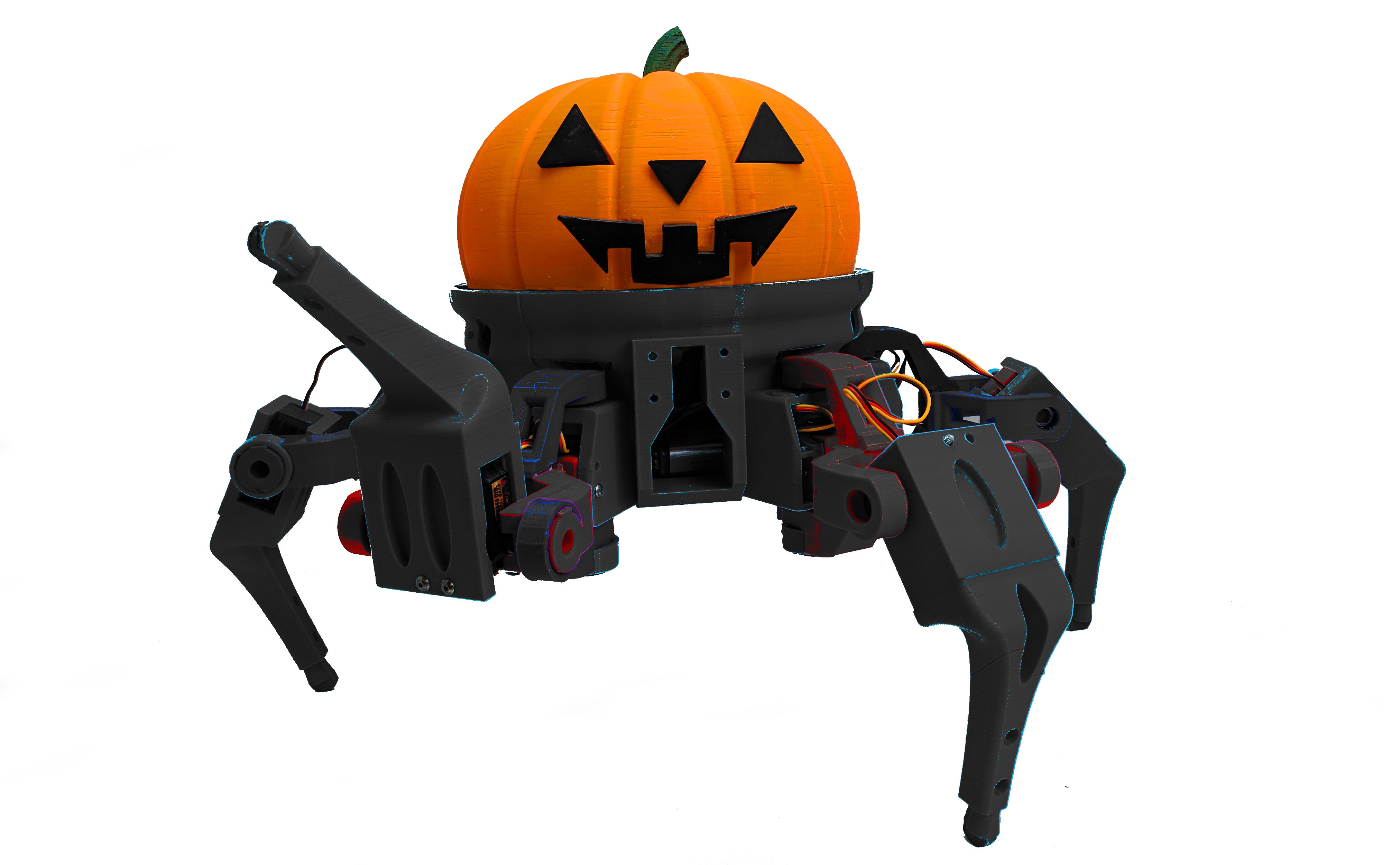Everyone Loves Max
Here are some videos of Max in action (some also show our original, smaller hexapod). We've shown Max at this year's flagship NY City Maker Faire where our exhibit won an "Editor's Choice Award", and we've also shown it at teacher conferences, smaller Maker Faires and other public events. Everywhere we take Max, crowds of people form and are impressed with its size and somewhat terrifying speed!
We even have ported our "Joust" game to Max and Jousted at the South Jersey Makerfest recently (see video below).
MAKE: Magazine Editor's Choice
When we showed Max at the New York Maker Faire a few weeks ago, the crowds loved it! Little kids (and even their parents) were awe-struck whenever Max sprung to life in our display and started busting some serious dance moves. People audibly gasped when it started dancing and scampering at terrifying speed across the table.
Some editors from MAKE: saw the reaction and awarded us a coveted "Editor's Choice Award" at the Faire.

We Believe in Open Source
Like all our projects, Max is open source, CC-BY-SA. All 3D models and source models are publicly available for your hacking pleasure. All Arduino and Scratch code is public as well. We use absolutely no proprietary parts. Every piece of electronics is either open source (Arduino Nano, Adafruit Servo Driver) or commonly available (standard size servos, standard connectors, no proprietary boards of any kind). Links to all source files are listed below.
We do provide the convenience of kits (Megapod kit is here) that come with everything you need. We've found that if we provide kits, many more people will build the project, and they'll be much more successful. A lot of people try to source their own parts but end up buying the wrong parts, or are fooled into buying defective parts from unscrupulous suppliers.
If you're thinking of building your own Megapod but have never built a moderately complex robotics project before, we would suggest you first start with the smaller, less expensive, and easier to build original Vorpal the Hexapod (link) model.
Origins of the Project and Acknowledgements
Thanks to Gaige Moore who helped develop the original prototypes for the smaller Vorpal the Hexapod as a high school project and helped build and test prototypes of Max.
Thanks also go to science fiction and fantasy author Peter S. Drang for originally suggesting this supersized version of the hexapod project.
Scaling Up Is Hard To Do
Max is based on the original Vorpal Hexapod, but trust me, it was a lot harder than just printing the parts at 200% size!
Hundreds of changes had to be made to the 3D models to make this work and still be printable on modest sized printers. (Printer only needs a 200mm cube bed, about 8 inches, medium sized by today's standards).


The main changes were:
- Real bearings had to be used on all Servos mounts. The original hexapod only weighs about a pound so we could get away with little plastic nubs, but that won't work on the 9 pound Max--way too much friction. We used commonly available 608 Skate bearings in the spirit of keeping this open source using only commonly available hardware.
- The largest parts were split up and screw mounts were added so this can be printed on modest sized 3D printers. It only requires a 200mm cube bed (about 8") and quite a few people have printers at least that big.
- The entire electrical system had to be changed due to the much higher currents that the larger servos draw.
- All the caddies to hold electronics are totally redesigned, and power distro harness is massive compared to the smaller hexapod project. It takes two full hours to build the power harness for Max, but it only takes 15 minutes to build the one for the smaller Vorpal Hexapod. (In our kits, these parts are pre-soldered for you.)
- It took a long time to find the right servo to drive this project. After trying many different kinds, we settled on the workhorse MG958 from Tower Pro which was a great balance of low cost and high performance.
- We bought a bunch of different batteries and did extensive battery testing so we could make good recommendations and characterize runtimes for Makers who wanted to build the project.
In all, it was at least 300 hours of work (not including print time for numerous failed attempts), and thousands of dollars in expenses, to create this double sized version.
Software Compatible
Interestingly, one thing that did not change very much was the software. No changes were required to the Scratch interface, and no coding changes to the Arduino code were needed (out of thousands of lines). This allows us to keep a common codebase between the large and small robot.

Max the Megapod with Halloween Themed Pumpkin Head
Fully Compatible with Vorpal the Hexapod
Max is fully compatible with all the features of the original Vorpal Hexapod, including:
- All dance moves, walking modes, and leg motions work just the same in Max. The motions are just as fast, but since Max is twice the size he has twice the ground speed. For a hexapod, he moves incredibly fast, and we think he's one of the fastest open source walking robots out there.
- Max is fully Scratch programmable, including the ability to create new walking gaits and new leg motions using Scratch and upload them to the gamepad for use during activities. You don't even need to be connected to the computer to use these stored leg motions.
- Max uses the same gamepad (3D-printed) as Vorpal, no need to relearn any commands if you've already built the smaller robot.
Future Work
Could an even larger version, called the Gigapod, be in the works?
Stay tuned!
 Steve Pendergrast
Steve Pendergrast